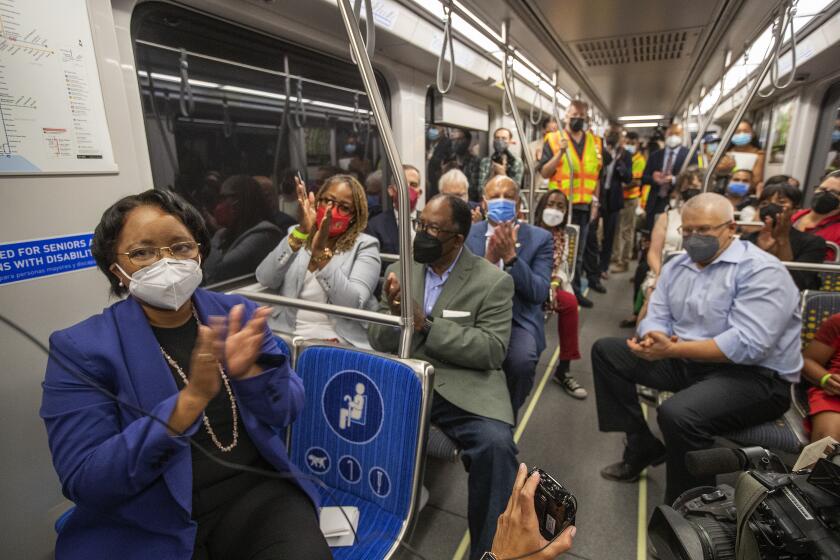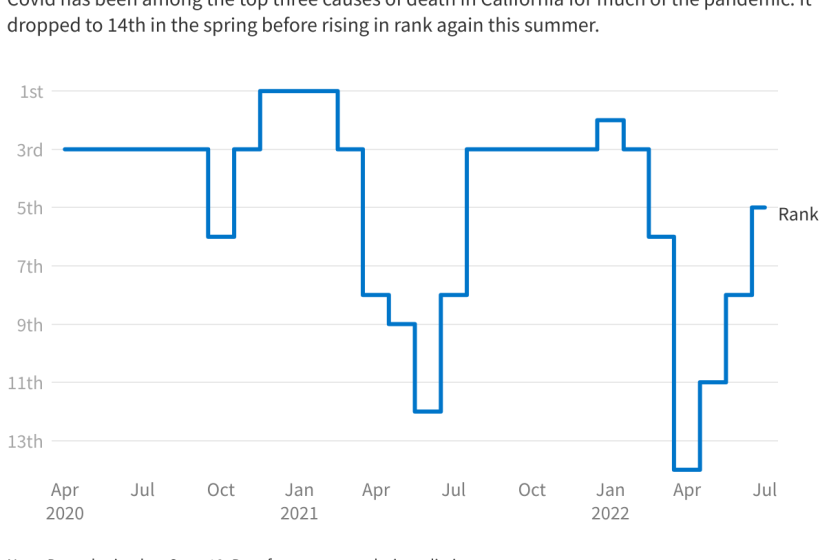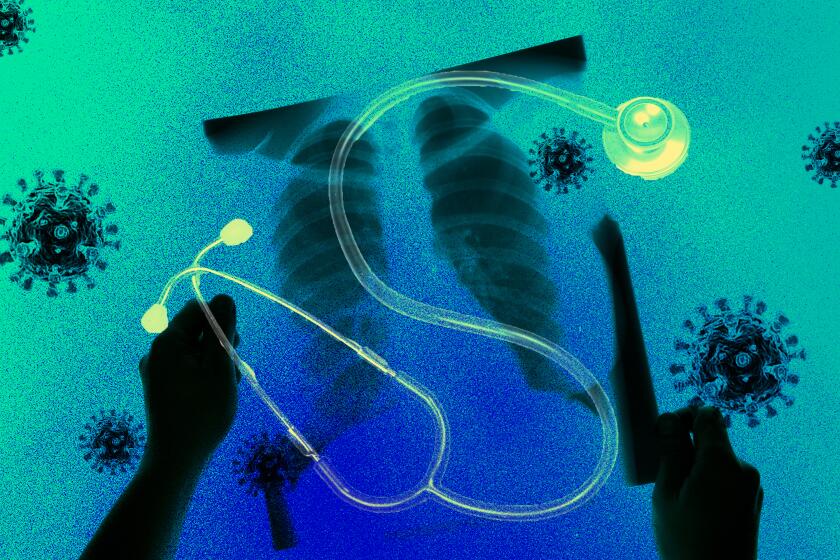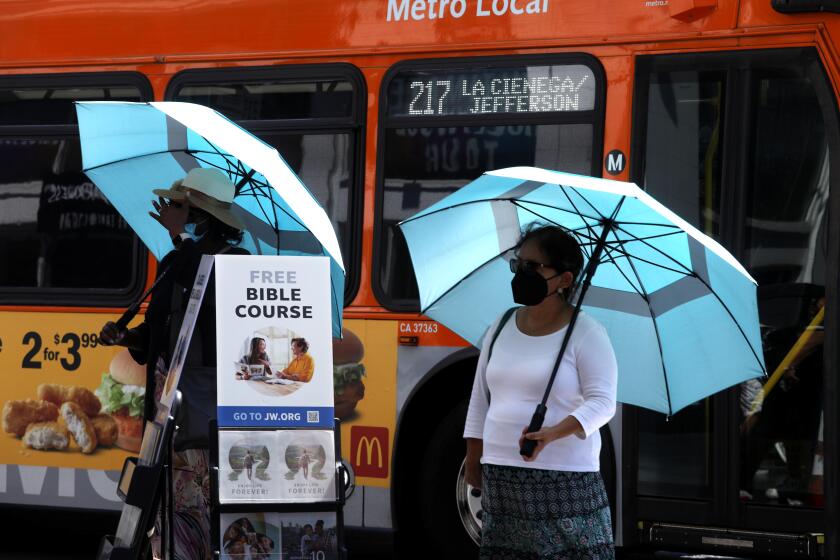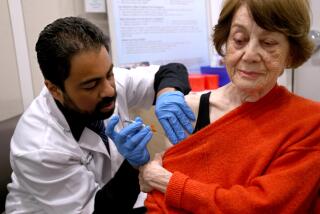‘The pandemic is over,’ some declare. It again misses larger point of COVID-19, experts say

- Share via
“The pandemic is over.”
It’s a pronouncement we’ve heard several times in the more than 2½ years since the World Health Organization declared COVID-19 a pandemic.
As California enters fall with the coronavirus very much on the decline, some are once again declaring victory. But health experts say that despite the significant progress, it’s less about turning the page than about understanding that COVID-19 remains quite unpredictable.
The heat was recently turned up on the long-simmering question when President Biden declared “the pandemic is over” during an interview with “60 Minutes.” Days later, Biden acknowledged the criticism he received over his statement but added that the pandemic “basically is not where it was.”
It wasn’t the first time the president has sought to project the end of the pandemic. On the Fourth of July 2021 — almost seven months into the nation’s vaccine rollout — Biden said, “we’re closer than ever to declaring our independence from a deadly virus.”
But that declaration, which came when the U.S. COVID-19 death toll stood at a bit more than 605,000, proved premature. Nearly 450,000 COVID-19 deaths have been reported since, fueled by last summer’s Delta variant and the dual-pronged Omicron waves that first struck after Thanksgiving.
California sees COVID retreat now, but new variants bring caution as colder weather nears.
Officials across the nation widely acknowledge the substantial gains made in the fight against COVID-19. The U.S. is awash in vaccines and effective therapeutics, and new boosters targeting the dominant circulating coronavirus strain are now available.
And even after the arrival of the Omicron variant — which sent cases soaring to unprecedented levels — California came nowhere close to reinstituting the shutdowns or other stringent restrictions that typified earlier phases of the pandemic.
Still, public health experts remain concerned at the considerable number of daily deaths. And there is worry that too few Americans have gotten a single booster shot, which is important to protect against severe illness.
“We are much better off now,” Dr. Anthony Fauci, Biden’s chief medical advisor for the pandemic, said at a recent virtual talk of the Center for Strategic and International Studies. “But we are not where we need to be if we are going to, quote, ‘live with the virus.’”
There’s no doubt conditions have improved since the darkest days of the pandemic, when more than 3,000 Americans were dying every day. Since August, the U.S. has been reporting 350 to 500 COVID-19 deaths a day. That’s above the low of about 200 before last year’s Delta surge, and is “unacceptably high,” Fauci said.
Over a year, that would add up to 125,000 to 180,000 COVID-19 deaths — four to five times the average annual number of flu deaths, which is about 35,000.
“Four to five hundred deaths a day is just unacceptable,” Dr. Ashish Jha, the White House COVID-19 response coordinator, said Tuesday at another Center for Strategic and International Studies forum. “It is a level of suffering and death that we do not accept as ‘living with COVID.’”
The number of Californians dying of COVID-19 — and the demographics of those falling victim — has shifted notably from the pandemic’s first two years.
While there’s no shortage of pundits, politicians and other prognosticators clamoring to declare the end of the pandemic, the ultimate call is up to the WHO.
And that’s a decision that will likely be based on a scientific committee’s review of data, not personal sentiment.
“The definition of a pandemic is an outbreak of disease that has then spread beyond any one or two countries to a global spread,” said Dr. Robert Kim-Farley, an epidemiologist and infectious-disease expert with the UCLA Fielding School of Public Health.
One challenge to defining the end of a pandemic is figuring out when we’ve returned to some kind of baseline for coronavirus cases and deaths. For now, “we don’t have what the baseline is for COVID because we’ve never had it before,” Kim-Farley said.
The L.A. Times wants to hear from long haul COVID-19 patients in California and their caregivers about how they’re navigating the challenges of their illness.
Before the coronavirus, the last time the WHO declared a global pandemic was the H1N1 swine flu in 2009. That pandemic, however, ended up being less deadly than initially feared, and the agency declared its end the following year.
A prior system outlined by the WHO broke a pandemic flu’s trajectory into several phases — including a “post-peak” period, in which “pandemic activity appears to be decreasing; however, it is uncertain if additional waves will occur,” followed by a “post-pandemic period.”
But COVID-19 is the first pandemic known to be caused by a coronavirus.
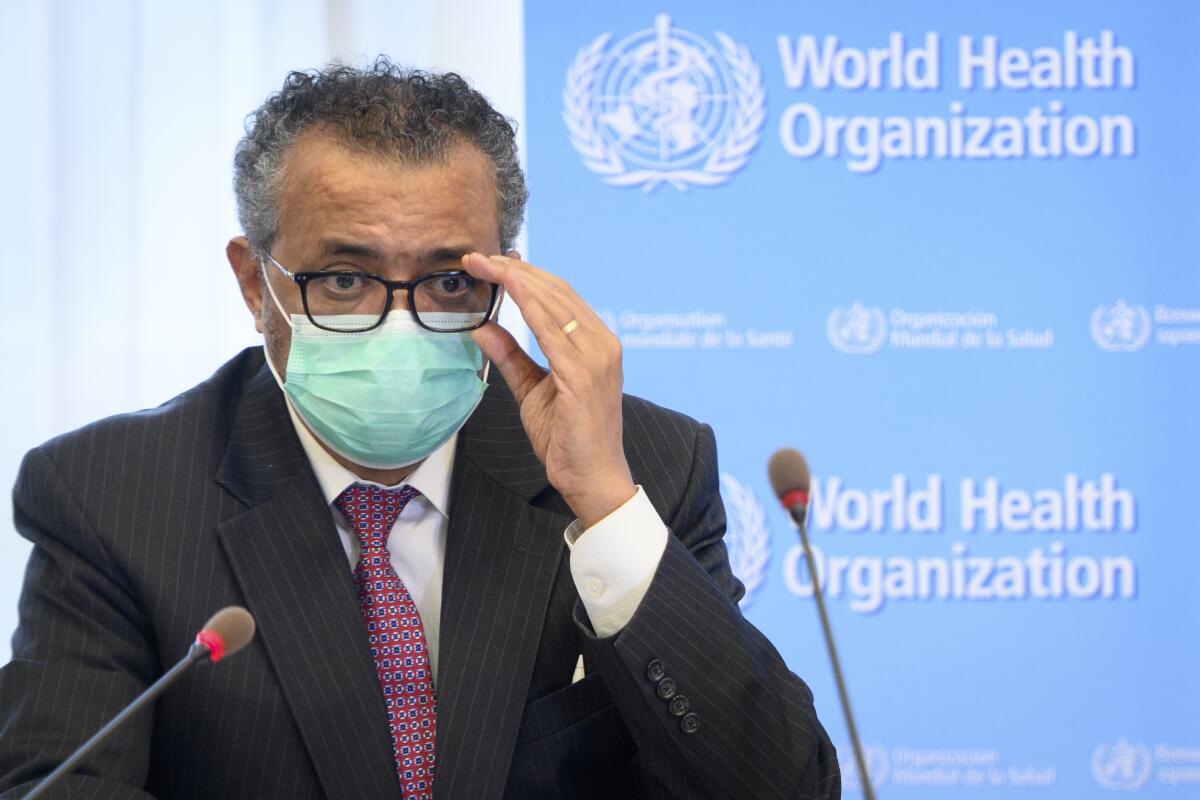
WHO Director-General Tedros Adhanom Ghebreyesus has sought to balance the unmistakable data showing the pandemic is improving while emphasizing it’s not over. He noted in early September that the number of weekly reported COVID-19 deaths had fallen to the lowest level since the start of the pandemic.
“We have never been in a better position to end the pandemic. We are not there yet, but the end is in sight,” Tedros said.
He also compared the fight against COVID-19 to a marathon runner who hasn’t yet completed the race.
“Now is the worst time to stop running,” he said. “If we don’t take this opportunity now, we run the risk of more variants, more deaths, more disruption and more uncertainty.”
Scientists will have to see many months of stability before it’s certain the pandemic is over. Declaring the end too soon could be like sounding an all-clear announcement after a major earthquake when there’s still the potential for significant aftershocks.
A big question with the new COVID-19 vaccine: Can you mix brands? Here is what experts say
There are also additional practical ramifications.
“My fear is always that when you hear that the ‘pandemic is over,’ we stop getting resources for the things we desperately need to keep each other safe,” Los Angeles County Public Health Director Barbara Ferrer said. “We need money for vaccines so that they’re still free. We need to have free testing. We need to have free access to the therapeutics in order to get through the next few months. So my hope is no one thinks that we don’t need those resources to continue to do the hard work we’re doing.”
To say “we’re not in a pandemic phase anymore, metaphorically, also means that the feds aren’t really ready to support some of these efforts to drive down these deaths,” according to Dr. Peter Chin-Hong, a UC San Francisco infectious-disease expert.
Chin-Hong said his definition of a pandemic’s end is when there’s a level of predictability and a lower number of deaths — and neither of those criteria has been met.
“It’s weird to say that the pandemic is over now, based on one time point. It’s really more of a longitudinal assessment,” or studying trends over time, Chin-Hong said. “It’s just like saying, before Omicron hit, that the pandemic was over.”
“Getting both vaccines at the same visit increases the chance that a person will be up to date with their vaccinations,” the CDC says.
COVID-19 was the third leading cause of death in the U.S. in 2021, behind only heart disease and cancer. And during the first four months of this year, the per capita death rate for the illness in L.A. County was higher than the rate for diabetes, motor vehicle crashes and flu/pneumonia.
Older residents are continuing to die at elevated rates. L.A. County’s COVID-19 death rate between May and July 2022 for those age 65 and older was significantly higher than during the same time period in 2021. The pandemic also continues to disproportionately affect poorer residents and people of color.
It’s clear that “we’re in such a better place this year than we’ve ever been in the pandemic,” Ferrer said. “But there’s a lot we still need to do to get to the end.”
Unvaccinated individuals also remain at higher risk — both of being infected and of suffering the worst health outcomes of COVID-19.
“That’s why everyone’s thinking the end of this year will be another surge because [a number of] people who have had natural infection, say in January, with the beginning of Omicron, would have dwindled in their immunity … where they could be more susceptible to getting infected again,” Chin-Hong said.
Although a person’s schedule could change depending on health, occupation or travel plans, officials generally recommend the dose before holiday season.
In July, unvaccinated Californians were 2.5 times more likely to get COVID-19 and 3.6 times more likely to die from the disease than those who had completed their primary vaccination series, according to the most recent data available from the state Department of Public Health.
When someone, especially a person who’s unvaccinated, gets infected a second time, “you’re like playing COVID roulette. You don’t know if you’re going to get very ill at that point,” Chin-Hong said. “Whereas, if somebody has received three doses of a vaccine, for example, I know that I can be more confident that that person wouldn’t be seriously ill.”
Many experts expect COVID-19 will eventually settle to the point that it causes about 100,000 deaths a year in the U.S., still well above the typical annual mortality from the flu.
“Is that acceptable? Maybe it is to society, but it’s something we didn’t have in 2019,” Chin-Hong said.
The ultimate wildcard is whether another problematic new variant soars to prominence.
“The ultimate goal would be … [to] get to a level of control that’s low enough that it doesn’t disrupt our social order and essentially dominate what happens in society,” Fauci said. “We’re heading in that direction, but we must be aware … that as we get into this coming late fall and winter, that it is likely we will see another variant emerge.”
Already, there is one relatively new Omicron subvariant, BA.2.75.2, that officials are keeping a wary eye on.
Another Omicron subvariant, BA.5, remains the dominant version of the coronavirus circulating nationwide — making up an estimated 83.1% of cases during the weeklong period ending Saturday, according to data from the U.S. Centers for Disease Control and Prevention. However, its grip has slipped of late, coinciding with small gains by newer subvariants such as BA.4.6 and BF.7.
For now, the only certainty when it comes to the coronavirus is uncertainty.
As officials in California and beyond try to assess how severe a fall-and-winter coronavirus wave may be, one key factor is the growth of several new subvariants now emerging.
“Who knows when the next stage is going to be? Who knows what the variants are going to be? And what’s going to happen in 2023 after this potential winter surge?” Chin-Hong asked.
As Ferrer put it Tuesday: “It would be foolish not to be prepared for uncertainty because we’ve just seen so much uncertainty.
“We feel very optimistic. We’ve got great tools. For the first time we’re going to enter into the winter with a booster dose that’s actually made to match what’s circulating right now, which is going to give us a lot of protection,” she said during an update to the L.A. County Board of Supervisors. “But people do have to get vaccinated, and it’s hard to motivate people to get vaccinated if they feel like the pandemic is over.
“So I think we have to be realistic, to say we’re in a much better place than we’ve been for a long time, we’ve got a great tool for this fall. But we still need to be real about the fact that the pandemic is not over.”
More to Read
Sign up for Essential California
The most important California stories and recommendations in your inbox every morning.
You may occasionally receive promotional content from the Los Angeles Times.
